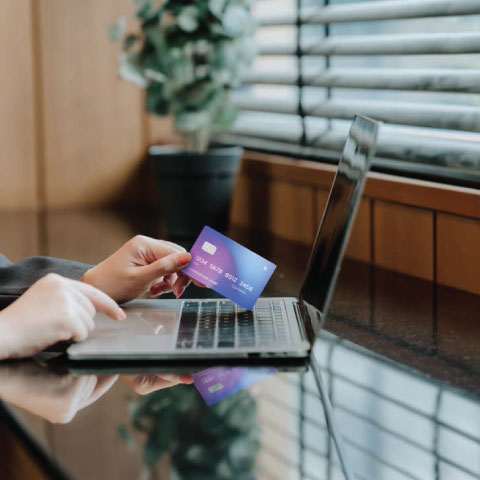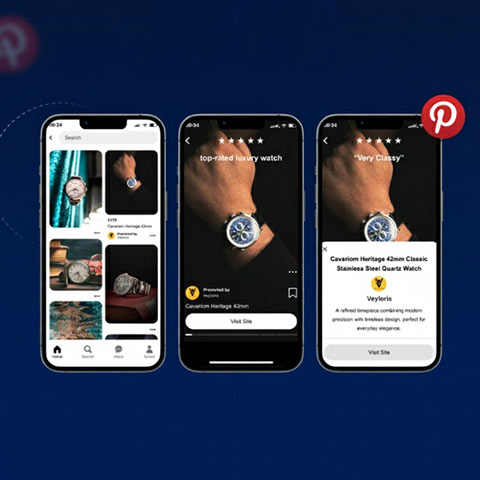Browsing, Buying or Both - Mobile Shopping Behaviour

In the United Kingdom, an astounding 57 million people have made at least one purchase using a mobile phone. That’s enough to fill the London Tube network 11 times over every single day!
Mobile has changed the way we shop, and retailers must pay attention to these consumer behaviours and expectations to keep pace.
We wanted to learn a bit more about how consumers today use mobile devices to shop and buy, so we conducted a survey of 1000 UK consumers. Much of our analysis focuses on three demographics – millennials (ages 18-34), Gen Xers (ages 35-54) and baby boomers (ages 55 and above). From their answers, we gleaned some of the most prominent mobile trends for adult shoppers in the UK.
As mobile shopping gains ground, consumers expect a retailer’s mobile site to be fast, helpful and easy to use. If your mobile experience can’t keep up with demand, chances are there’s a competitor’s site that will. Don’t leave that revenue on the table. Let’s take a closer look at what shoppers want and how to deliver.
Get the downloadBelow is an excerpt of "Browsing, Buying or Both - Mobile Shopping Behaviour". To get your free download, and unlimited access to the whole of bizibl.com, simply log in or join free. |

|
Who’s Buying via Mobile?
We asked respondents to tell us the first time they made a purchase using a mobile phone. If you thought you had more time to make your purchase experience mobilefriendly, we’re sorry to say you’re already behind.
Eighty-two per cent of the millennial generation have already bought via their phone. Additionally, 67% of Gen Xers surveyed have done so, while just 27% of baby boomers have.
The point at which each of these groups said they made their first purchase is also very interesting. Thirty-two per cent of millennials said they purchased with their mobile device for the first time in the month prior to the survey, while only 14% of Gen Xers and 2% of baby boomers did so.
But don’t equate a lack of baby boomer interest in buying from a mobile phone as lack of interest in online shopping – 97% of respondents in that demographic group report having bought products online using a computer.
Another demographic group with a big uptick in trying mobile purchasing for the first time: those who report a household income of £75,000 or higher. Twenty per cent had first made a purchase via mobile phone in the last six months, and 22% did so in the month just prior to the survey. This group also has more consumers who have ever made a purchase using a mobile phone – 78%
The survey also showed that respondents with children are much more likely to make a purchase with a mobile phone. Seventy-nine per cent of respondents with children have done so versus just 40% of those without children.
This recent, rapid adoption among younger individuals and those with children is likely related to retailers optimising their websites so it’s easier to shop and buy from a mobile device. Additionally, wealthier consumers and respondents with children likely value the time savings of mobile purchasing, and younger consumers tend to be using their mobile phones as older generations still use their laptops or desktops.
Other In-Store Uses for Mobile Phones
Making purchases isn’t the only way consumers are using mobile to help them shop. People tend to keep their devices close by, especially during trips to bricksand- mortar stores. And as our research confirms, the most popular use is an attempt to learn more about the products they’re thinking about buying.
The top uses of mobile by UK consumers while shopping in stores: looking up product information (25%) and reviews (21%), and comparing prices online versus instore (21%).
These activities are more common with Gen Xers and millennials than baby boomers – 47% of whom don’t use their phone at all for shopping purposes while in a store.
Parents are three times more likely to search for discounts via their phone while shopping in a store.
From an income standpoint, the more money a consumer earns, the more likely they are to comparison shop, look at reviews and look for product information or promotions while in a store.
- Of those who earn less than £14,999, only 8% use their mobile phone to comparison shop in the store, while 41% of those earning more than £75,000 do so.
- That same group also regularly seeks more product information (46%) compared to just 16% of those with a household income below £14,999.
- As for online reviews, 40% of consumers earning at least £75,000 say they view them in-store, while only 12% of consumers in households earning less than £14,999 do so.
The differences are even more striking between those with children and those without. Those with children are three times more likely (32% vs. 10%) to look for promotions and discounts on their mobile device while shopping in a physical store.
What Does This Mean for Retailers?
The research results point to the many ways shopping has evolved. Online-only and omnichannel retailers must ensure that shopping – and buying – from a mobile device is as seamless as possible, especially if your target market has children, is in the upper income brackets or part of the millennial or Gen X demographics. You may even be competing with a store that offers easy mobile purchasing through an app (54% of surveyed consumers have at least one retail app on their phone). Don’t lose the sale because it’s difficult to place an item in a basket or check out.
And given how mobile devices are used during trips to bricks-and-mortar stores, you must consider the value they bring to the consumer. Pricing is much more transparent than it used to be, so staying competitive can involve more than offering the best price.
When a customer is standing in front of a product in your store, what can you offer that would compel them to buy even if the price comparison or review suggests other possibilities? Can you offer same-day delivery of large items? Easy returns? Or should you make sure your online site is easy to navigate and order from if the in-store item isn’t exactly what they’re looking for? There are many ways to engage a shopper besides price. Convenience, customer service and help in the buying process are just a few.
No matter what strategy you take, make an effort to understand your shoppers who buy with a mobile device. How do they use them to shop with you? What’s important to them? What keeps them coming back? Finding the answers to these questions will be your first step toward success.
Bronto can help with your mobile strategy! Find Out More.
Methodology
We partnered with Imperium and Precision Sample to conduct a 39-question online survey in April 2017 and received 1000 responses from UK consumers with an overall margin of error of 3.02% at a 95% confidence interval.
About Bronto
Bronto Software arms high-growth retailers with sophisticated marketing automation to maximise revenue opportunities. The Bronto Marketing Platform powers personalised multichannel content that generates the higher engagement needed for retail success. Keenly focused on the commerce marketer, Bronto continues its longstanding tradition as a leading email marketing provider to the global Internet Retailer Top 1000 and boasts a client roster of leading brands, including Euro Car Parts, notonthehighstreet.com, Oak Furniture Land, Joseph Joseph and OKA. For more information, visit bronto.com.
Want more like this?
Want more like this?
Insight delivered to your inbox
Keep up to date with our free email. Hand picked whitepapers and posts from our blog, as well as exclusive videos and webinar invitations keep our Users one step ahead.
By clicking 'SIGN UP', you agree to our Terms of Use and Privacy Policy


By clicking 'SIGN UP', you agree to our Terms of Use and Privacy Policy







![[Quick-Start Guide] Facebook Catalogue Shopping Product Feed Ads [Quick-Start Guide] Facebook Catalogue Shopping Product Feed Ads](https://images.bizibl.com/sites/default/files/shoppingiq-facebook-ads.png)

